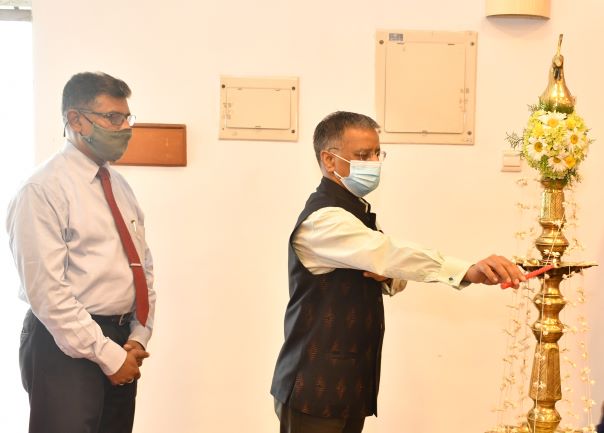Colombo, March 21 (newsin.asia): Inaugurating the off-line International Relations Programs of the Bandaranaike Centre for International Studies (BCIS) here on Monday, the Indian High Commissioner Gopal Baglay stated that the pervasive cultural affinity between India and Sri Lanka gives their relationship an exceptionally strong foundation.
The High Commissioner said that Indians and Sri Lankans are brothers or “Sahodara”, a term used both in India and Sri Lanka. The term “Sahodara” refers to persons from the womb of the same mother. Further, motherhood is lauded in the cultures of both India and Sri Lanka. It is central to the notion of nationhood in both countries. He pointed out that both the Sri Lankan national anthem Sri Lanka Matha and India’s national song Vande Mataram identify the mother with the nation.
The Indian policy of friendship and accommodation towards all is again based on the ancient cultural dictum that the “world is one family” expressed in Sanskrit as “Vasudhaiva Kutumbakam”. The High Commissioner extrapolated on this concept and said that Prime Minister Narendra Modi’s “Neighborhood First” policy stems from the concept of the world being one family.
Coming to present-day Indo-Sri Lankan linkages, the High Commissioner said that Sri Lanka and India are bound by language and the political system. Both use English and both are pluralistic democracies.
But the relationship faces challenges too, Baglay added. The shared challenges are economic development and tackling COVID. But challenges also throw up opportunities, he pointed out. Challenges could be seen from both a short term and a long term point of view. In the long term, the solution lies in investment rather than aid. In this context, the High Commissioner referred to the investments India can make in renewable energy in Sri Lanka and also in explorations for fuel in the Gulf of Mannar. As India grows, its growth could be shared by others in the neighborhood.

India could help Sri Lanka revive its tourist sector. Indians are already the single largest group among arrivals. Indians like to come to Sri Lanka because of the similarities and the hospitable nature of the people of Sri Lanka, he pointed out.
Lastly there is scope for cooperation between Sri Lanka and India to ensure security in the Indian Ocean Region by upholding the freedom of navigation and a rule-based maritime order. In this sphere India is guided by Prime Minister Narendra Modi’s concept of “SAGAR” which stands for “Security and Growth for All in the Region,” the High Commissioner said.
In his welcome address, BCIS Senior Director Ambassador Sumith Nakandala stressed the need to promote a “non-parochial” outlook on India-Sri Lanka relations. One should not lose sight of the fact that 7000 years before the Common Era, India and Ceylon were connected by land. Perhaps the present-day Rama Sethu is a remnant of that link. Between 1300 and 1800 AD, the Indian Ocean was an integrated whole, he said. Right through ancient times, India and Sri Lanka had a kindred civilization based on Sanskrit and Prakrit. There is now a crying need to revive a non-parochial approach to the region, Ambassador Nakandala said.
He recalled that India had propounded the theory of Asian solidarity through the Asian Relations Conference which it held in 1947, even before India became independent. One of the outgrowths of the conference was the Colombo Plan for regional cooperation. Nakandala drew attention to Jawaharlal Nehru’s contention that Sri Lanka and India need each other.
The inauguration of the off-line International Relations Courses, was marked by a demonstration of ethnic reconciliation in Sri Lanka: After a long time in the island nation, the Sri Lankan national anthem was sung in both Sinhala and Tamil and not in Sinhala only.
END
The post Cultural affinity is the bedrock of India-Sri Lanka ties, says Indian envoy appeared first on NewsIn.Asia.
Source: NewsAsia



